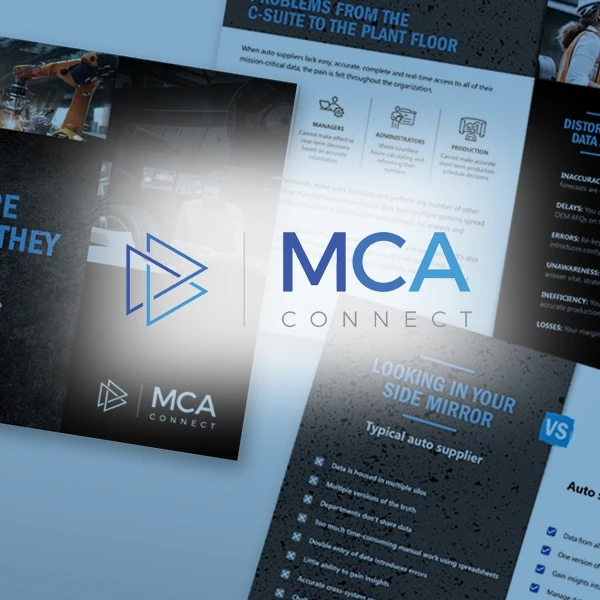If you’re looking for a marketing method that delivers immediate, easy-to-track results (like pay-per-click advertising and direct-response campaigns), thought leadership might not be for you. This is because, unlike other marketing strategies, thought leadership is about long-term brand building, trust and authority, which enable accelerated revenue growth, market penetration, margin expansion and improved marketing program effectiveness. The impact of thought leadership is often felt across multiple touchpoints in the buyer’s journey and within the broader market ecosystem.
Eight Top Metrics for Measuring the Effectiveness of Your Manufacturing Thought Leadership Program
If you’re looking for a marketing method that delivers immediate, easy-to-track results (like pay-per-click advertising and direct-response campaigns), thought leadership might not be for you. This is because, unlike other marketing strategies, thought leadership is about long-term brand building, trust and authority, which enable accelerated revenue growth, market penetration, margin expansion and improved marketing program effectiveness. The impact of thought leadership is often felt across multiple touchpoints in the buyer’s journey and within the broader market ecosystem.
In other words, measuring the performance of your thought leadership campaigns isn’t straightforward. Your challenge is that marketing success isn’t measured with a single number or metric anymore than success in business is measured with only one metric. Instead, it requires tracking a mix of direct and indirect indicators to assess impact over time. Below are the top eight metrics that B2B manufacturers and suppliers should monitor to gauge the success of their thought leadership initiatives. Some of these metrics are obvious, some are less than obvious. Some are easy to gather, others require more effort. But, collectively, they help you measure the success of your manufacturing thought leadership program.

KPI 1. Response Rate to Cold Outreach
Why It Matters: Thought leadership builds credibility, making prospects more likely to engage with sales outreach. When a company is recognized as an industry authority, prospects are more receptive to calls, emails and LinkedIn messages. According to our research, 88% of decision-makers are more receptive to sales outreach from organizations that produce thought leadership content (see our 2025 Thought Leadership in Manufacturing Report).
How to measure
- Email open and response rates
- Call connection rates (percentage of calls resulting in conversations)
- Number of meetings booked after initial outreach
- Benchmark these numbers before and after implementing your thought leadership program
KPI 2. Percentage of No-Decision Outcomes
Why It Matters: Many B2B deals stall out with no decision made. A strong thought leadership strategy can help guide hesitant buyers by providing clarity and reducing decision fatigue. Ever-larger buying teams struggle to align, slowing sales cycles and producing more “no decisions.”
How to measure
- Track how many sales opportunities result in no decision, and express this figure as a percentage of all opportunities
- Compare this percentage before and after implementing your thought leadership efforts
- Look for trends in why deals are stalling. Are prospects unclear on the right path forward, for example, something you could address with a blog post, whitepaper or buying guide?


KPI 3. Growth in Subscribers and Followers
Why It Matters: increasing numbers of followers and subscribers indicate growing brand awareness and increasing interest in your insights.
How to measure
- Growth in LinkedIn followers over time
- Number of new email newsletter subscribers
- Blog subscriber growth
KPI 4. Engagement on Social Media and Other Channels
Why It Matters: Thought leadership should spark discussions and establish your brand as a trusted resource. And we aren’t talking about common vanity metrics such as likes. We are talking about true engagement from readers and views who comment on your posts, forward your newsletters, and comment on your blog.
Our research study finds that 39% of decision-makers dedicate more than six hours per week to reviewing thought leadership content. In a demanding workweek, this is a significant time investment—equivalent to an entire workday in some cases. If customers and prospects are committing this much time to your thought leadership, you must ensure that content is both high-quality and literally engaging.
How to measure
- Social media interactions (likes, comments, shares)
- Blog comments and discussions
- Time spent on key web pages (bounce rate, session duration)


KPI 5. Margin Expansion
Why It Matters: Strong thought leadership justifies premium pricing. If buyers see your company as a leader, they’re more likely to pay a premium for your expertise. Read the 2025 Thought Leadership in Manufacturing Report and you’ll discover that 76% of decision-makers are more likely to pay a premium to work with an organization that produces thought leadership content.
How to measure
- Compare gross margin before and after implementing your thought-leadership program
- Analyze pricing flexibility and willingness of customers to accept premium pricing
- Track customer feedback on perceived value of your solutions
KPI 6. Inbound Interest (Leads, Website Traffic, Event Attendance)
Why It Matters: Thought leadership should increase inbound inquiries and engagement with your brand. As we discovered in our research, 87% of decision-makers say that thought-leadership content led them to research a product, service or solution they were not previously considering.
How to measure
- Website traffic growth (sessions, unique visitors, bounce rate)
- Number of downloads of white papers and gated content
- Number of inbound inquiries and lead-form submissions
- Trade show booth traffic and engagement at events


KPI 7. Brand Perception and Trust
Why It Matters: Buyers prefer to do business with brands they trust, and that trust is built through delivering consistent value, reliability and expertise. Decision-makers seek partners who demonstrate deep industry knowledge and a clear understanding of their challenges.
Thought leadership plays a critical role in enhancing credibility by positioning a brand as an authority in its field. Well-researched insights, expert analysis and forward-thinking perspectives reassure buyers that they are engaging with a knowledgeable and dependable company. Our study demonstrates that showed that 92% of decision makers think more positively of organizations that consistently produce thought leadership content.
How to measure
- Sentiment analysis of online mentions
- Media coverage and industry recognition
- Sales team feedback on how prospects perceive the company
- Third-party research or surveys measuring brand reputation
KPI 8. Thought Leadership Content Sharing
Why It Matters: If your content is valuable, people will share it. A high level of sharing amplifies your reach and credibility. Roughly 72% of decision-makers in general and 88% of C-suite decision-makers in particular either often or always share thought-leadership content with their colleagues or network.
How to measure
- Social shares of blog posts, white papers, videos and reports
- Email forwards (trackable with marketing automation tools)
- Referrals and mentions in industry publications
- Anecdotal feedback from sales on whether customers reference shared content


Final Thoughts
Measuring the success of a thought leadership program requires a mix of hard data and qualitative insights. While some metrics like social engagement and website traffic are easy to track, others—like brand perception and trust—require surveys and industry benchmarking.
Ultimately, your goal as a manufacturer or as a supplier to manufacturers is to create a thought-leadership strategy that drives meaningful business impact. If your company is seeing increased engagement, stronger brand trust, and better sales conversations, your efforts are paying off.
At the end of the day, thought leadership isn’t just about marketing—it’s about positioning your company as the go-to authority in your industry. And when done right, the benefits extend far beyond the numbers.
If you need help establishing a successful though-leadership program, let’s talk. In the meantime, feel free to read our exclusive 2025 Thought Leadership in Manufacturing Report.

"You guys met our expectations in every way. It [RH Blake Market Research] was the information we were looking for. Congratulations and Thank You!"
 Scott Griggs
Scott Griggs
Director of Services for Food Manufacturing and Food Service
ALS Global

"“I’ve gotten all that I’d hoped for from the RH Blake Growth Roadmap™ and more. Based on the research and insights, we adjusted our offering scope and sales approach. And this adjustment has been effective at generating new opportunities."
 Diane Reko
Diane Reko
President
REKO International

"RH Blake has been an outstanding partner. They deliver creativity, on time, and always so professional. We love working with them because of their perspective, support, and their efficiency in turning projects around quickly."
 Samantha Spano
Samantha Spano
Digital Product Marketing & Communications Manager
Industrial Automation Energy Industries
ABB
Related Clients













